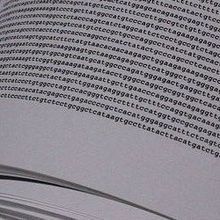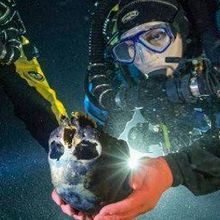Login
Subscribegenetics & genomics, human evolution

Neanderthal-Human Hybrid Unearthed
Bob Grant | Jun 22, 2015 | 3 min read
DNA from the 40,000-year-old bones of a modern human found in Europe contains Neanderthal genes.

TS Live: Genetic Time Machine
Bob Grant | Jun 12, 2015 | 1 min read
Piecing together scraps of DNA from a 400,000-year-old hominin femur

Genomes Point the Way
Ruth Williams | May 28, 2015 | 3 min read
Sequence analysis of Egyptian, Ethiopian, and non-African peoples indicates a likely route taken by modern humans migrating out of Africa.

Lost Y Chromosome Genes Found on Autosomes
Anna Azvolinsky | May 27, 2015 | 3 min read
Mammalian Y chromosome genes with important functions are transferred to autosomal chromosomes more often than previously thought, a study shows.

A Benefit of Failed Pregnancy?
Ruth Williams | Apr 9, 2015 | 3 min read
Scientists find a common genetic variant in mothers that decreases the chance of successful pregnancy.

Fraction of SNPs Can Affect Fitness
Kerry Grens | Jan 21, 2015 | 1 min read
A point mutation analysis of the entire human genome finds that alterations to as many as 7.5 percent of nucleotides may have contributed to humans’ evolutionary split from chimpanzees.

45,000 Year-Old Bone Sequenced
Kerry Grens | Oct 24, 2014 | 2 min read
The oldest human genome to have been sequenced came from a leg bone preserved in Siberia.

Week in Review: June 16–20
Tracy Vence | Jun 20, 2014 | 2 min read
Early Neanderthal evolution; developing antivirals to combat polio; the mouth and skin microbiomes; insect-inspired, flight-stabilizing sensors

Diversity in Mexico
Jef Akst | Jun 16, 2014 | 2 min read
A genomic survey of Mexicans reveals a wealth of diversity in North America’s southernmost land.

Week in Review: May 12–16
Tracy Vence | May 16, 2014 | 3 min read
Antidepressant could prevent Alzheimer’s plaques; 12,000-year-old human skeleton sequenced; disentangling the mystery of octopus arms; taking a look at the ocular microbiome

Ancient Skeleton Sheds Light on Native American Roots
Anna Azvolinsky | May 15, 2014 | 3 min read
Analysis of approximately 12,000-year-old human remains supports the idea that modern Native Americans evolved from ancestors who migrated out of Asia.

An Ancient Evolutionary Advantage?
Emily Willingham | Apr 1, 2014 | 3 min read
Shared sequences within the brain lipid-metabolism pathway between Neanderthals and modern Europeans highlight questions about how these genetic similarities arose.

Week in Review: March 10–14
Tracy Vence | Mar 14, 2014 | 3 min read
Whole-genome sequencing in the clinic; blood-based biomarkers predict future cognitive problems; how some pain meds inhibit bacterial growth; ResearchGate launches Open Review

Origins of Lactase Persistence in Africa
Ashley P. Taylor | Mar 13, 2014 | 3 min read
Large-scale sequencing effort confirms several mutations that confer lactase persistence in Africans, while haplotype analysis sheds light on the trait’s origins.

Inner Neanderthal
Abby Olena, PhD | Jan 30, 2014 | 2 min read
Two studies demonstrate the extent of Neanderthal DNA that persists in modern human genomes.

The Mating Habits of Early Hominins
Ruth Williams | Dec 18, 2013 | 3 min read
A newly sequenced Neanderthal genome provides insight into the sex lives of human ancestors.

Week in Review: December 2–6
Tracy Vence | Dec 6, 2013 | 3 min read
Oldest hominin DNA sequence; visualizing dyslexia; testing CRISPR; cancer and autoimmunity

Week in Review: April 8-12
Jef Akst | Apr 12, 2013 | 3 min read
Hot topics from the AACR meeting; the ongoing debate about pesticides’ effects on bees; a treasure trove of baby dinos; conservation on social media

Humans Adapt to Icy Life
Beth Marie Mole | Jan 30, 2013 | 1 min read
A genetic analysis of Siberians finds three genes that have evolved to help the populations weather the frigid winters.
Sohini Ramachandran: Population Tracker
Megan Scudellari | Jun 1, 2012 | 3 min read
Assistant Professor, Ecology and Evolutionary Biology, Brown University. Age: 30